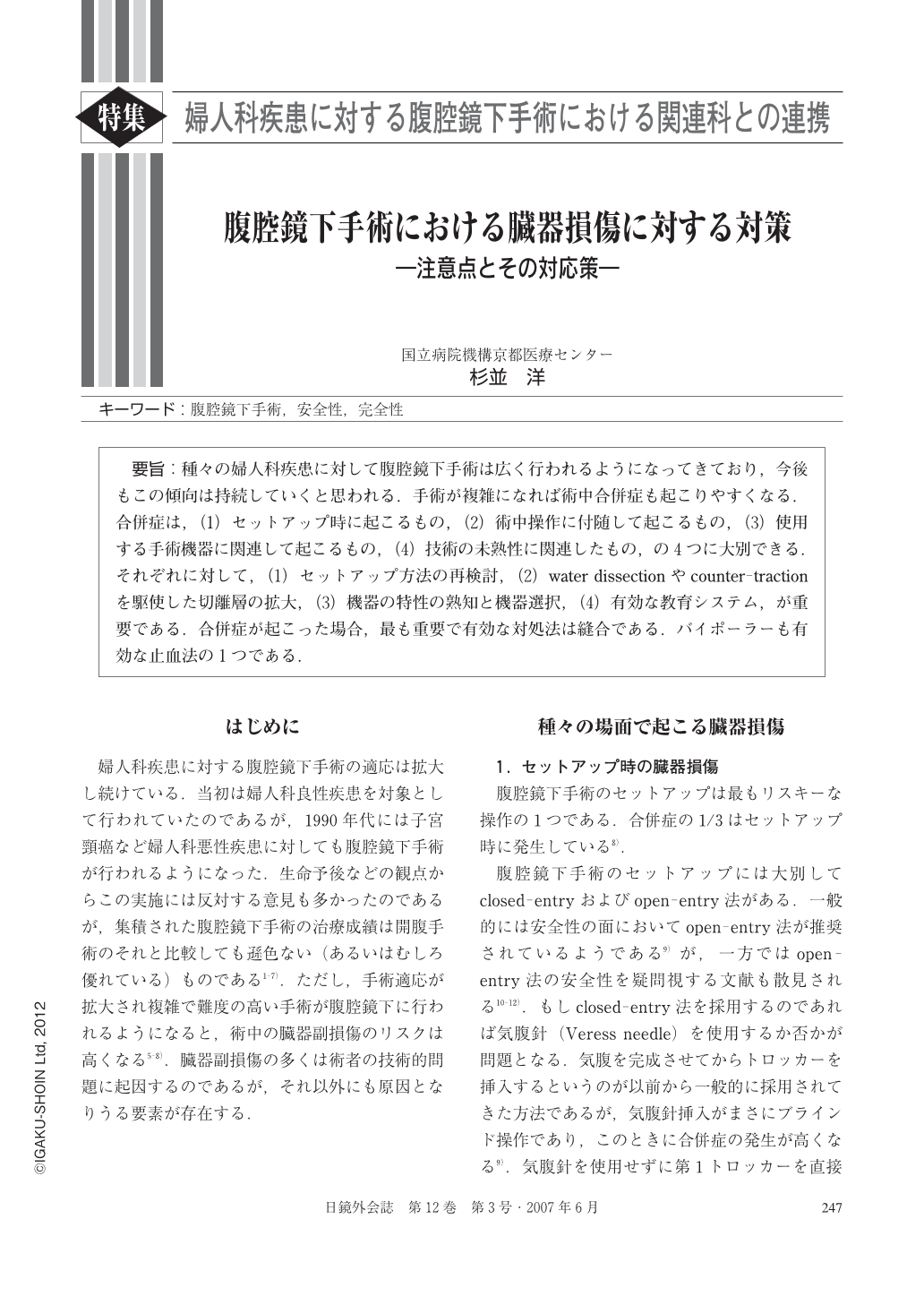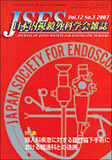Japanese
English
- 有料閲覧
- Abstract 文献概要
- 1ページ目 Look Inside
- 参考文献 Reference
要旨:種々の婦人科疾患に対して腹腔鏡下手術は広く行われるようになってきており,今後もこの傾向は持続していくと思われる.手術が複雑になれば術中合併症も起こりやすくなる.合併症は,(1)セットアップ時に起こるもの,(2)術中操作に付随して起こるもの,(3)使用する手術機器に関連して起こるもの,(4)技術の未熟性に関連したもの,の4つに大別できる.それぞれに対して,(1)セットアップ方法の再検討,(2)water dissectionやcounter-tractionを駆使した切離層の拡大,(3)機器の特性の熟知と機器選択,(4)有効な教育システム,が重要である.合併症が起こった場合,最も重要で有効な対処法は縫合である.バイポーラーも有効な止血法の1つである.
Laparoscopic surgery is now being applied to a variety of gynecologic disorders and its indication is still spreading. The more complex the surgery, the higher is the likelihood of complication to occur. The complications occur 1)at the set-up stage of the surgery, 2)in connection to the surgical procedures, 3)in connection to the instruments used, and 4)in relation to technical immaturity of the surgeon. In order to minimize the occurrence of complications, it is mandatory 1)to re-evaluate the set-up procedures, 2)to widen the cutting plane by applying water dissection and counter-traction techniques during the surgery, 3)to have thorough knowledge of the instruments to be used, and 4)to establish efficacious training programs not only for the surgeon himself but also for succeeding doctors to start their careers in laparoscopic surgery. The most effective recovery technique from the complication is suturing under laparoscope. Bipolar hemostasis is also an effective technique to control bleeding in gynecologic surgery.

Copyright © 2007, JAPAN SOCIETY FOR ENDOSCOPIC SURGERY All rights reserved.


